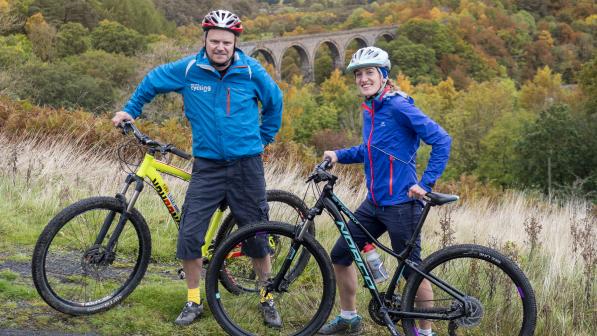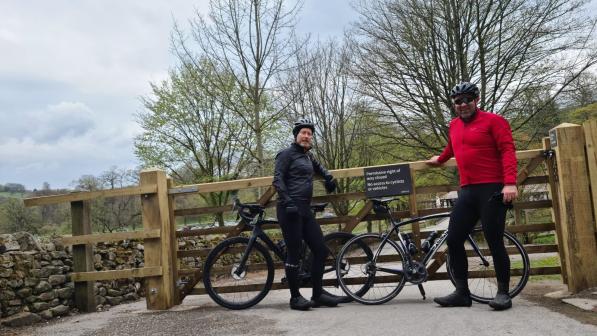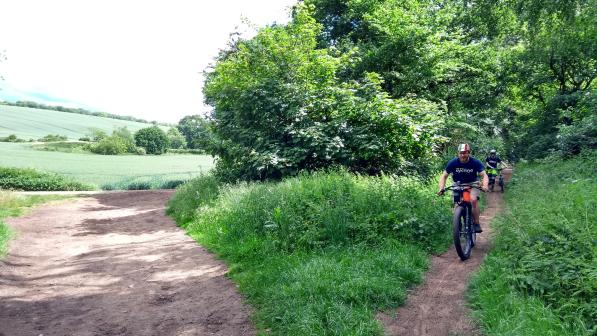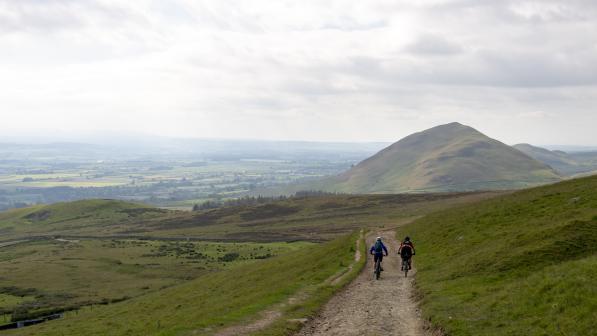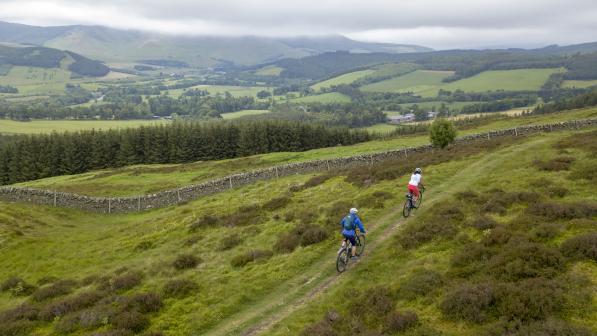Is this England's biggest bike ban?

This Sunday is the first day of Bike Week, the annual celebration delivered by Cycling UK to showcase cycling and the benefits of riding a bike.
And to start things with a bang, the World’s Biggest Bike Ride is back, where every ride matters and we’re asking people to pledge to ride this Sunday.
But where to ride and where to go; or where would you rather ride, if only you could?
If only bikes weren’t banned.
When is a bike ban a tax scam?
If you haven’t been following the story of the Duke, the bike ban and the taxman, here's a quick summary: in March, cyclists in Yorkshire were dismayed to find security guards preventing them from accessing a popular café on the Duke of Devonshire’s Bolton Abbey estate via the Wooden Bridge, a route many had used for decades. But that was just the hors d’oeuvre, the main story was the Duke’s denial of access to the rest of the 30,000, despite avoiding tax by promising HMRC that he’d allow public access to his land.
As outlined in this article about bike bans, broken promises, and the lack of public benefit, some landowners secure an exemption from capital gains tax and inheritance tax known as a conditional exemption, by promising the UK Government, via HMRC, that they will allow public access to national heritage assets. This can include large areas of land such as the open moorland on the Bolton Abbey estate.
Pie crust promises
There’s a register of these conditional exemptions, which records the Duke’s undertaking that “Public access is available all year on the public roads and permissive footpaths and bridleways shown on the map".
Unfortunately, the reality is that the Duke doesn’t appear to allow any more access to his land than the public are already legally entitled to.
Most of the ‘permissive paths’ carry a ‘no cycling’ sign, so the undertaking’s reference to permissive bridleways, which should, pursuant to section 30 of the Countryside act 1968, include cycle access, is a pie crust promise – because there don’t seem to be any permissive bridleways.
The public gets – well, not very much
Given that the majority of the permissive paths also cross what’s known as open access land, which is land over which (in England and Wales) the public already have a right of access on foot, the permissive paths don’t give the public any additional access, because the public already has a right to walk along those paths, and indeed the surrounding land, because it’s open access land.
So, if the public can only obtain access they’re legally entitled to already, what’s the point of the tax exemption, and what does the public get in return?
This is a question we’ve been asking HMRC but, as outlined last week, HMRC is as elusive with answers as the Duke is with access.
We still await answers from the HMRC to our questions on the access undertaking at Bolton Abbey and their own procedures for checking that such access undertakings are complied with.
Questions about what access is promised in return for a tax exemption, and how, if at all, HMRC monitors compliance, aren’t unique to Bolton Abbey. Other estates we’ve identified where it’s unclear what access has been promised or is being provided include the 5,000 acre Highclere estate in Hampshire, Blenheim Palace in Oxfordshire, Badminton in Gloucestershire, and of course Chatsworth Estate, another property owned by the Duke of Devonshire.
Glover Review, and restrictive access laws
One reason we’re trying to find out what access has been promised on these and similar estates, and what’s actually being provided, is that we can’t ask HMRC why access for people cycling isn’t part of the deal or wasn’t considered without knowing the answers to the first questions.
And HMRC should be asking those questions, because many of these estates are located within either National Parks or Areas of Outstanding Natural Beauty and concerns about unnecessary restrictions on public access within National Parks were raised within the Government’s landscapes review in 2019, the Glover Review, which reported that:
"Concerns were also raised about what are perceived to be restrictive laws, or restrictive interpretations of them. There is a lack of consistency between National Parks with some considered to be promoting shared and fair access, others less so. And there seems little logic across the country to the nature of rights of way at the moment. In some other places, almost all routes are only open to walkers not horse riders or cyclists. As even rural roads become busier and more dangerous, it is all the more important that fair access is given to all."
Public enjoyment of the National Parks
HMRC is, of course, the public authority responsible for the development and oversight of conditional exemption undertakings. In the context of the undertaking for Bolton Abbey, which involves public access to land within a National Park, HMRC also has an obligation to fully consider the dual national park priorities when carrying out its duties, which includes promoting opportunities for the understanding and enjoyment of the special qualities of the National Park by the public.
That’s why we asked HMRC over five weeks’ ago whether, in the development and administration of the conditional undertaking agreement for Bolton Abbey, they had fully considered and given sufficient regard to the duty to promote opportunities for the understanding and enjoyment of the special qualities of the National Park by the public - specifically the lack of access for cyclists and horse riders to both permissive paths and the wider estate, including vehicular moorland access tracks.
But we’re still waiting for an answer.
Making a fuss
If you’re wondering why Cycling UK is making a fuss about tax emptions and private landowner access provision, it’s because the question of public access has to be a key part of conversations about the public benefits provided for public subsidies – and a tax exemption is a public subsidy.
Post Brexit, the system for paying agricultural subsidies to farmers is changing. To put this in context, a quick search on DEFRA’s website shows that in 2019, the Chatsworth Settlement Trustees and The Trustees of the Chatsworth Settlement received between them, in respect of the Duke’s land at Bolton Abbey and Chatsworth, nearly £750,000 in agricultural subsidies.
No small sum, and that’s additional to the tax benefits from a conditional tax exemption. Getting information from HMRC on that, though, is in my experience like pulling teeth.
If there’s one thing we’ve learned ….
Of course, there’s a myriad of other factors that need to be considered when determining farm subsidies, and the undertakings given to secure conditional exemptions from tax can include arrangement for access to other heritage assets as well as estate land.
But seventy years after the creation of the first national park, we have to remember that they were established as part of a post-war vision to protect Britain’s special landscapes and encourage the public to spend time outdoors away from polluted cities and factories.
I’m a bit bored of politicians telling us what we’ve learned from coronavirus and lockdown, but they do keep saying that we’ve learnt the value of people accessing green space, which is exactly what Julian Glover was trying to tell them two years ago.
If they have genuinely learned this, then it’s time to crack on and implement some of the Glover recommendations, and a good place to start would be for a government department, HMRC, to have a good look at the public benefits it extracts for public subsidy through the conditional exemptions scheme, and perhaps try to be a bit more transparent.
